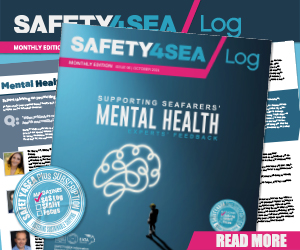Click for a larger view of the image here
Allianz Global Corporate & Specialty has released a new report on the Panama Canal Expansion Project to commemorate the opening of the new locks on June 26th. Allianz examines how this project will impact traffic of larger vessels, value of insured goods and risk management.
The Panama Canal’s $5.25bn expansion is a significant and major project as it increases the maximum vessel capacity and enlarges the overall volume of transported freight. Container ship capacities will increase from 4,400 to about 13,000 teus. The new locks create a third lane of traffic for larger “New Panamax” vessels. The value of insured goods transported will increase with the expanded Canal, as will the risk accumulation. this could result in an additional $1.25bn in insured goods passing through the Canal per day.
Panama Canal: Fast facts
- All gates at the new locks are the same length, 57.6m, but they are of varying heights, depending on their placement along the Canal, with the tallest 33.04m high (the equivalent of an 11 story building)
- March, August and December were the busiest transit months through the Canal in 2015; slowest months were February, September and June
- To date, the expansion project has generated over 31,000 direct jobs
- Toll revenues through the Canal were $1.994bn in FY2015, a 4.4% increase from FY2014
- Revenues from full container vessels (fully loaded ships) represented 47.4% of all tolls collected in FY2015
- Since the Canal first opened in 1914, it has provided transit service to more than 815,000 vessels.
What will be the impact of larger vessels being able to transit the Canal?
The Panama Canal Authority (ACP) estimates that the combined effect of 12 to 14 larger Panamax vessels per day (an average of approximately 4,750 ships a year) combined with continued smaller vessel transits will double capacity, increasing Canal throughput from 300m tons to 600m tons PCUMS (Panama Canal Universal Measuring System). PCUMS is the basis upon which vessels are charged for use of the Canal: one PCUMS ton is approximately 100 cubic feet of cargo space. A twenty foot long container (teu) is equivalent to approximately 13 PCUMS tons.
How will the value of insured goods being transported in the region be impacted?
In particular, the New Panamax ships, which are as long as four football fields, will be impacted. For example, a fully-loaded 12,600 teu container ship could have an average insured cargo value of $250m, based on an average value of $20,000 per teu.
With the cargo-carrying capacity of ships transiting the Canal having the potential to double following expansion, we can approximately assume this could result in an additional $1.25bn in insured goods passing through the Canal in just one given day.
Another potential risk is that higher concentrations of insured goods will be transported on bigger ships, which will call in at US ports and terminals, many of which are exposed to hurricanes. For example, a large portion of Superstorm Sandy losses in 2012 were due to storm surge that flooded ports in the Northeast region.
According to AGCS’ Safety and Shipping Review 2016, meteorological predictions anticipate more extreme weather conditions, bringing additional safety risks for shipping and potential disruption to supply chains. Hurricanes and bad weather were contributing factors to at least three of the five largest vessels lost during 2015.
Risk Management and Challenges
Bigger ships automatically pose greater risks in that the sheer amount of cargo carried dictates that a serious casualty has the potential to lead to a sizable loss and greater disruption. Increasing traffic of bigger ships means the amount of diesel and petroleum being transported could also pose a heightened pollution risk in the event of a casualty.
Captain Andrew Kinsey, Senior Marine Risk Engineer for Allianz and a former sea captain comments
”With the increase in size of vessels transiting the Canal, you have a corresponding increase in operational, environmental and commercial risks”
According to ACP, the Panama Canal has invested heavily in training resources, prevention programs and contingency plans in order to maintain its excellent safety record. With such an important emphasis on training, human error is unlikely to be the main cause of shipping incidents in the Canal.
However, the risk of grounding remains, either as a result of equipment failure or a casualty on the ship. Insurance companies will need to consider re-evaluating the routine risk to securing and monitoring containers under the new scenario, says Captain William Hansen, Senior Marine Risk Engineer, AGCS. A grounding of one of the larger ships in the Canal will cause severe disruption.
“Ports are attempting to get into the game and stay in the game. There is substantial commercial risk on the East Coast with ports expanding their container capacity in the hope of gaining market share. Ports in the US West Coast have also spent millions to expand their capacity in order to protect a market share that they already have,” explains Kinsey.
AGCS analysis shows that the Panama Canal region has an excellent and improving safety record in recent years

The Panama Canal has seen 121 reported shipping casualties (incidents) over the past 20 years with its safety record having improved significantly over the past decade in particular (24 casualties). These incidents have resulted in just four reported total losses since 1996.The Canal has only seen one double-digit year of casualties this century (2006). Two casualties were reported in 2015.

Collisions involving vessels (38) and contact with walls (34) have been the main drivers of shipping casualties over the past 20 years, collectively accounting for 60% of incidents. Machinery damage/failure is the third most frequent cause of incidents (23), accounting for 19%. In 2015 there were two reported casualty incidents in the Canal, the causes of which were piracy* and cargo damage (resulting from the dropping of a luxury yacht as it was lifted onto another vessel).

Cargo ships and container ships dominate the casualty lists as frequent transiters of the Canal, collectively accounting for over 60% of all casualties over the past decade. The two reported casualties during 2015 both involved cargo vessels.

There have been 121 shipping casualties over the past 20 years (including four total losses) in the Panama Canal with 24 casualties occurring over the past decade. Just two casualties were reported during 2015. The Suez Canal has seen 395 casualties over the past 20 years (including 11 total losses) with 143 casualties occurring over the past decade. 12 casualties were reported in 2015. Panama Canal has an approximate incident rate of around 1 in every 6,000 transits. The Suez Canal’s is around 1 in 1,450 transits.*
Please click below to view Allianz report on Panama Canal Expansion



































































